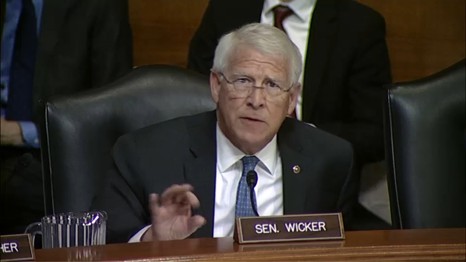Senator Roger Wicker, chairman of the Senate Committee on Commerce, Science, and Transportation, and Michigan Senator Gary Peters, introduced the Flood Level Observation, Operations, and Decision Support (FLOODS) Act to establish a National Integrated Flood Information System.
“Flooding is a common and deadly natural disaster in the U.S., resulting in over $25 billion in annual economic losses,” said Wicker. “Recent events in my home state of Mississippi, such as the prolonged opening of the Bonnet Carré spillway and the Pearl River and Yazoo backwater floods, underscore the importance of an effective understanding and response to high water. This legislation would protect lives and property by directing NOAA to improve its flood monitoring, forecasting, and communication efforts. I am eager to see the measure advance for Mississippians and all Americans who face dangers caused by flooding.”

This legislation would improve the National Oceanic and Atmospheric Administration’s (NOAA) forecasting and communication of flood, tornado, and hurricane events.
“Unexpected severe flooding has too often upended the lives of families and hard-working men and women across the U.S., including in Michigan,” said Peters. “This bipartisan legislation would help protect families and small businesses along high-risk shorelines and other communities by modernizing flood forecasts to provide more timely, actionable information, and I look forward to building additional support for this bill.”
So what would the FLOODS Act do?
It would:
- Establish a “National Integrated Flood Information System” to coordinate and integrate flood research at NOAA;
- Establish partnerships with institutions of higher education and federal agencies to improve total water predictions;
- Designate a service coordination hydrologist at each National Weather Service River Forecast Center to increase impact-based decision support services at the State and local level;
- Evaluate and improve flood watches and warnings and communication of information to support coordinated flood management;
- Encourage NOAA to evaluate acoustic tracking and measuring of windstorms, use aerial surveys of floodwaters to improve flood mapping, and improve modeling of freshwater outflow into the ocean;
- Establish a Committee to ensure coordination of Federal Departments with joint or overlapping responsibilities in water management.







